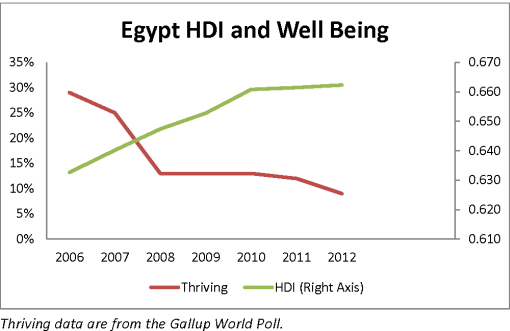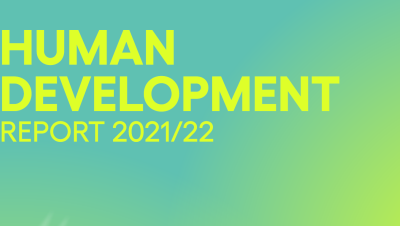March 20, the 3rd UN International Day of Happiness, marked a flurry of activity and articles around the world on the importance of happiness – or subjective wellbeing – to individuals, businesses and policy-makers. So we thought it was timely to use this second HDIalogue post to look at why a better understanding of happiness is important for human development.
First off, it is important to be clear about what we mean when we talk about “happiness”. The word can be used in at least two ways: it can be used as an emotion – “were you happy yesterday?”, or as an evaluation – “are you happy with your life overall?” Both provide important information that can be useful for decision-makers – after all it is often how people feel in the moment that determines how they behave – but its the second, evaluative, use of the word, that is more important when thinking about human development and progress.
I’ve been talking about the measurement of happiness – and the usefulness of those measures – for almost 15 years now, as a part of broader work looking at measuring progress and development. And when I talk to people about happiness and development I try to make four key points.
First, happiness can be measured. The science is still young but the measurement is easy in principle: simply ask people how they are feeling. But how accurate are the measures? The results of many surveys confirm that people do not confuse day to day happiness with life satisfaction overall, so the two questions give different answers. Of course it can be difficult comparing measures of emotion across languages and cultures, but considerable effort is being put into understanding these differences and allowing for them.
Second, I believe – on pragmatic grounds - that measures of life satisfaction are the strongest contender to turn public attention away from GDP as the popular barometer of progress. Many of those who are looking to go Beyond GDP (see the first HDIalogue) recognize that it remains in the spotlight at least in part because it is just one number and so is easier to interpret than a dashboard of wellbeing indicators: GDP up – good; GDP down - bad. Indeed, it was the power of a single summary indicator that led to the creation of the Human Development Index. But while people may disagree about the conceptual and mathematical construction of the HDI (why value a rise in life expectancy the same as an increase in education?), a simple measure of life satisfaction avoids these issues. It also resonates with citizens and the media and can provide a compelling window into a world of wellbeing. So these measures are a powerful communication tool. I would never argue that a measure of life evaluation is all that is needed to assess progress. It is a useful complement to other measures though. I’d also argue it can trigger a discussion on all those aspects of life that affect how we feel about life. And as pretty much everything affects that, a happiness measure is a Trojan horse for measures of human development.
Third, happiness is important for public policy. Daniel Kahneman’s pioneering work on behavioural economics has shown very clearly that people’s feelings affect their behavior. So anyone seeking to influence citizens, staff or customers would do well to understand how people feel. Moreover, evidence is growing on the many effects our emotions have on other more “objective” aspects of life. The links between happiness and good health for example seem plausible, albeit difficult to test. For example, one well-known study looked at an order of nuns in Milwaukee, looking at links between happiness and life expectancy among a group of women who joined the order at age 22. At the age of 85, 90% of the nuns in the most cheerful quarter (when they first joined the convent) were still alive as opposed to a third of the least cheerful. By the age of 94, more than half of the most cheerful were still living, versus just 10% of the least cheerful.
Fascinating stuff, but what does it mean for public policy? Lord Gus O’Donnell, former head of the British Public Service, has offered a number of interesting examples of why this is important for government. They range from putting more focus on mental health, to taking account of wellbeing, rather than $s, in cost benefit analysis for assessing where to build new roads. He notes that “governments are increasingly realizing that using wellbeing as a success measure will lead to better policies”. Moreover, as more wellbeing data are collected it seems likely that many more innovative policies will emerge as an army of public servants start using the data.
And fourth looking at life evaluations provides a useful and additional perspective to measures of human development, like the HDI. There is a very strong correlation between the two measures overall, as chapter 8 of the 2013 World Happiness Report shows. This is reassuring. But what is more interesting for anyone trying to understand development pathways are the countries where the two measures are out of step, as this data for Egypt on either side of the Arab Spring, shows so powerfully. It compares changes in the HDI (an average of population health, education and income) with data from the Gallup World Poll on reported life satisfaction among the community: the proportion of the population thriving have positive views of their present life situation (7+ on a 10 point scale) and have positive views of the next five years (8+ on a 10 point scale).

Subjective wellbeing and its measurement is not just a luxury for the developed world. It is relevant for every country. And while the science is still young, and a lot more research, especially from the developing world is needed, it is an area that I believe will prove increasingly interesting to anyone wanting to understand and promote human development.
Jon Hall is Policy Specialist at the Human Development Report Office.
References:
Hall, J., C.P. Barrington-Leigh and J. Helliwell (2010) “Cutting through the clutter: Searching for an overarching measure of well-being,” CESifo DICE Report 4, pp. 8-12.
Danner, D.D., D.A. Snowdon, and W.D. Friesen (2001) “Positive emotions in early life and longevity: Findings from the nun study,” Journal of Personality and Social Psychology, Vol. 80, pp. 804-13.
2013 World Happiness Report, Chapter 6 http://unsdsn.org/resources/publications/world-happiness-report-2013/
2013 World Happiness Report, Chapter 8 http://unsdsn.org/resources/publications/world-happiness-report-2013/
The HDialogue blog is a platform for debate and discussion. Posts reflect the views of respective authors in their individual capacities and not the views of UNDP/HDRO.


